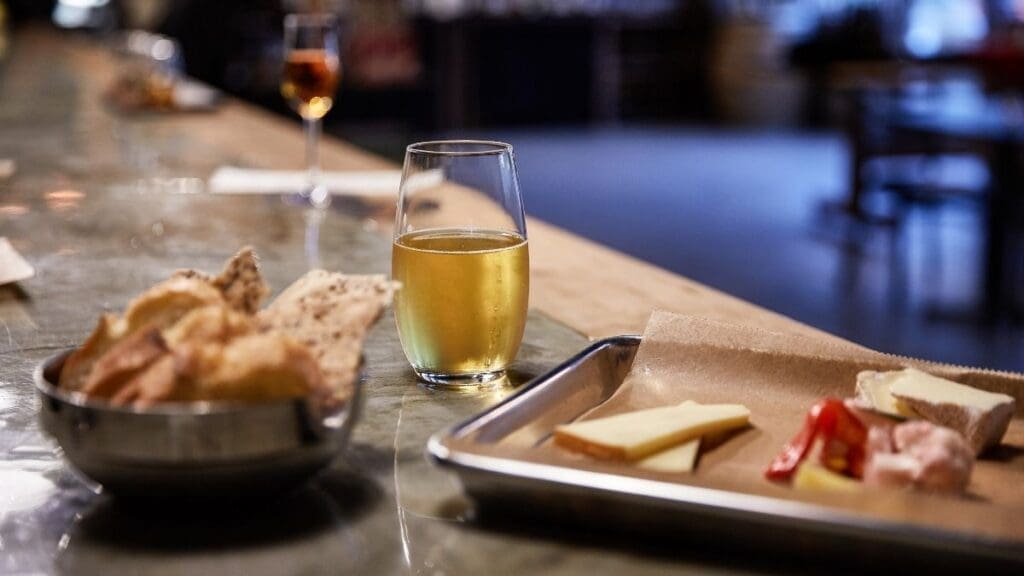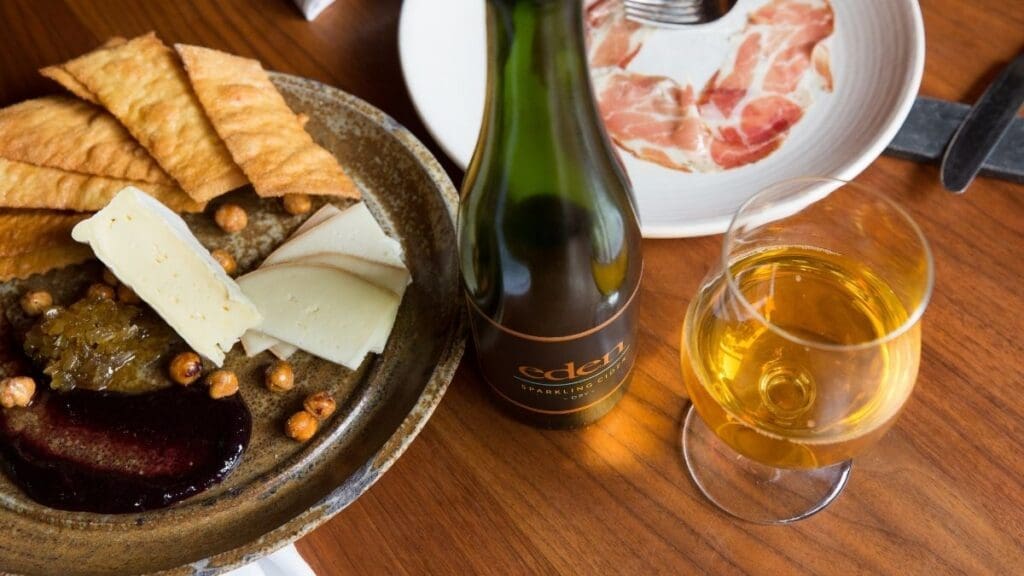Traditional method cider is a natural choice
Nothing says “Yay!” like bubbles. We celebrate life’s victories, big and small, with fizz. By default, we reach for champagne. But cider, especially one made like its vinous French cousin, is not just a delicious alternative; it’s often a better choice.
“People say ‘when in doubt, drink champagne,’” says Eleanor Léger, founder of Vermont-based Eden Specialty Ciders and president of the American Cider Association. “I think well-made, balanced cider is even more versatile.”
Although the traditional method of winemaking was popularized in France, it’s now used worldwide with a vast range of grapes and fruits. American cidermakers have embraced the technique to craft fine beverages that pair beautifully with myriad cuisines and occasions.

Not that the technique is easy. The traditional method (méthode traditionnelle, or MT) requires two fermentations, first in tank, then in bottle, followed by a period of aging. After the bottles are disgorged and topped, they may be held even longer before release. There is some creative flexibility: makers may use reserve stock, produce a vintage cuvée, sweeten it up or leave the beverage bone dry.
It’s complicated, but the process builds complexity — whether we’re talking apples or grapes. Bottle conditioning creates fine pearly mousse, creamy texture and delicate bead. Lees aging imparts savory, toasty flavors. Crackly acidity creates refreshing lift.
Such complexity makes MT cider a solid choice to mark important milestones: to toast the happy couple, ring in the new year, celebrate the graduate or launch the boat (what a waste).
Traditional Method cider also makes a peerless pairing with many foods. It’s great with cheese, of course, and lightly sweet styles work well with desserts. But also try it with seafood: oysters, trout, salmon, roe and especially conservas, canned delicacies from the Iberian Peninsula. MT cider’s body also balances spicy, piquant foods. Léger recommends it with non-European and vegetarian/vegan cuisines. Wild and foraged foods like rabbit, game birds, turkey and harvest meals are also a natural. Could there be a better fizz for Thanksgiving?

But it’s not just a sparkling wine stand-in. Traditional method cider also has distinctive qualities that offer significant advantages such as price, lower alcohol, complexity and sustainability.
Let’s start with price. According to Wine-Searcher, the average U.S. retail price of nonvintage champagne is $62.50, up from $50 a decade ago and up sharply from last year, thanks to inflation. Meanwhile, MT cider starts at around $15 — and while you can pay more than $30, especially for a varietal bottling, the sweet spot lands at around $20. That makes it a strong low-priced option for on-premise and especially BTG (by the glass) programs, and a vastly easier sell to all price-sensitive customers (did I mention inflation?).
Chris Struck, beverage director for ilili Restaurants in New York City, adds that “the margins are almost always better for cider.” Especially for diners seeking a local, all-American option, Struck believes MT cider is “a win-win-win.”

Lower alcohol by volume is another upside. Sparkling grape wines fall around 12.5% ABV, not high by vinous standards. But MT cider clocks in even lower, usually around 7 to 8%. Lower ABV is an important differentiator for some customers and makes cider a good choice for brunch, lunch or receptions where clearer heads should prevail.
There’s just something about cider, right? That’s complexity. Champagne houses strive for consistency in their nonvintage wines, while cider inherently telegraphs diversity. “[You have] the same beautiful bubbles you have with champagne, but made with interesting varieties,” Léger says. “There is so much more to the experience.” And just as with champagne, MT cider can be found in both white and rosé.
Lastly, sustainability is an issue. Classical, elegant MT ciders are made all over the United States, so odds are good you can find a local example (or two) and support the home team. “The values choice is that you’re drinking local,” says Léger.
Struck agrees. “You want to drink local or support America?” he asks. “Drink cider.”
Story featured in CIDER: The State of the Industry 2023.






